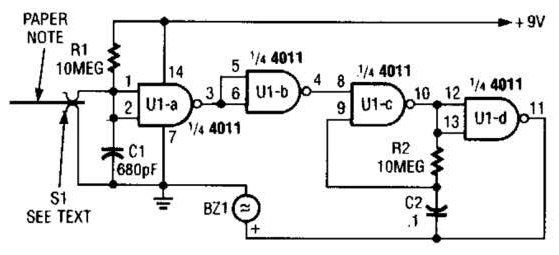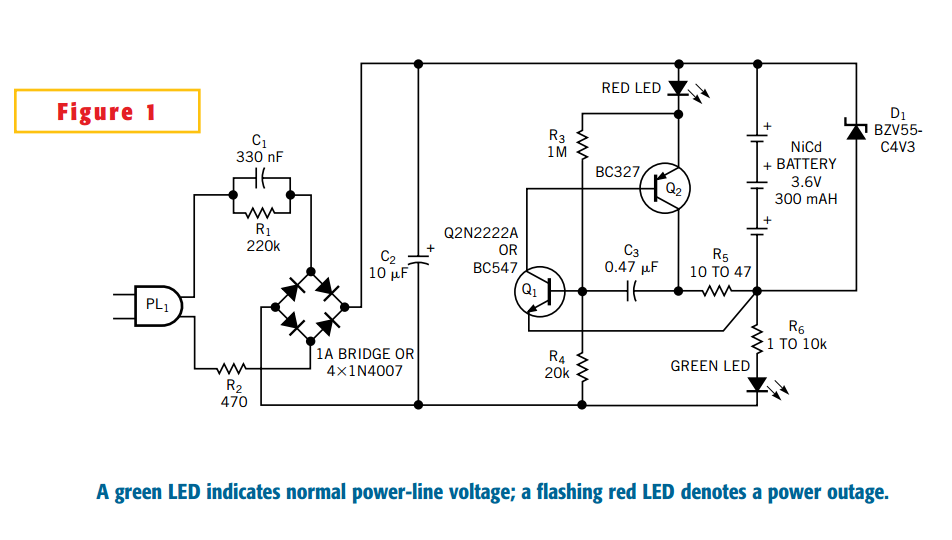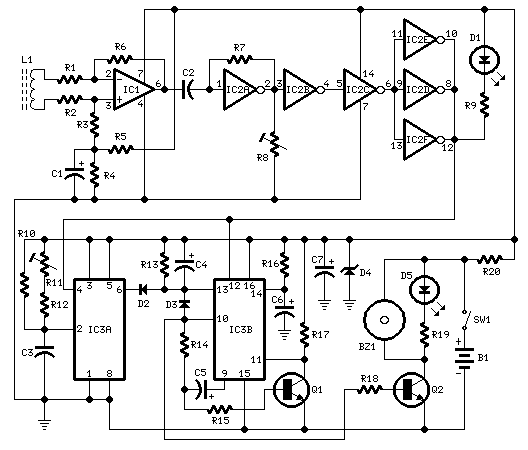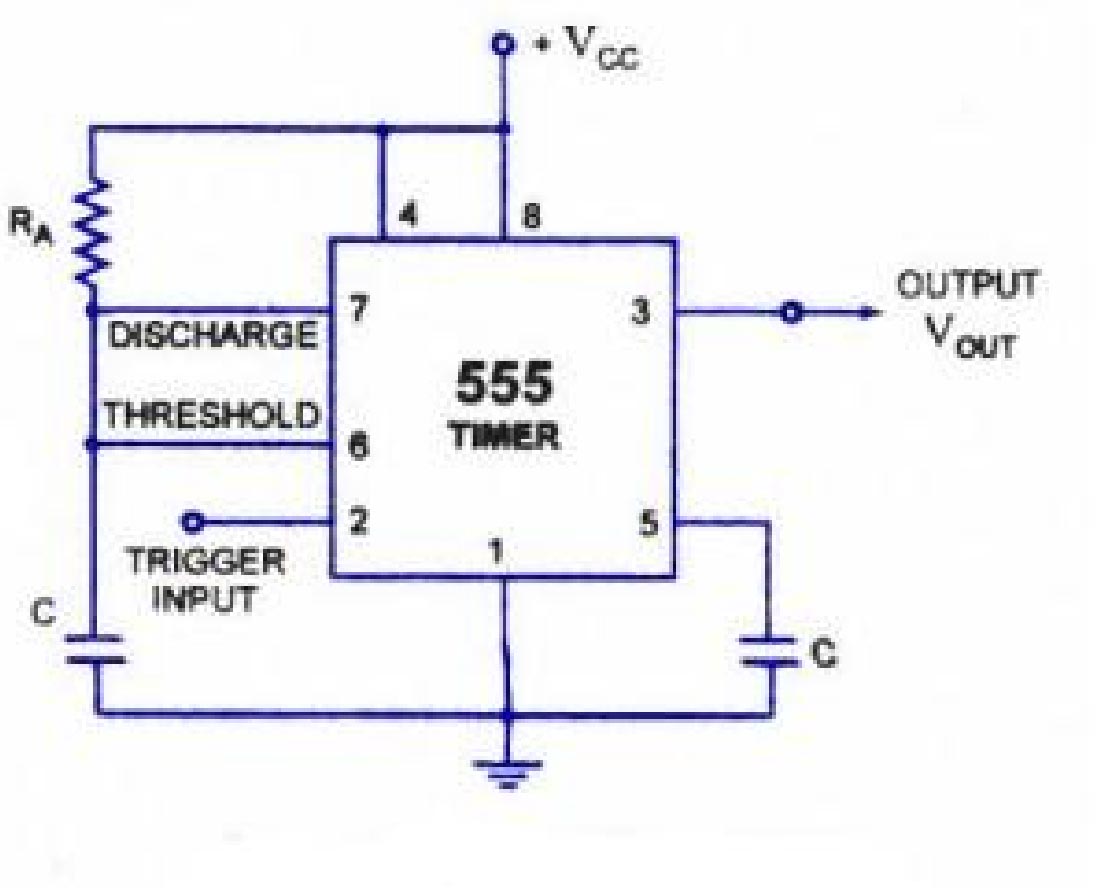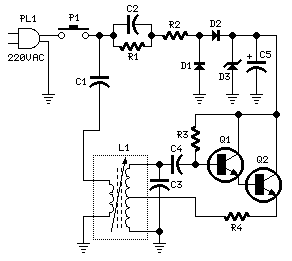
Speed-limit Alert

This circuit has been designed to alert the vehicle driver that he/she has reached the maximum fixed speed limit (i.e. in a motorway). It eliminates the necessity of looking at the tachometer and to be distracted from driving. There is a strict relation between engine's RPM and vehicle speed, so this device controls RPM, starting to beep and flashing a LED once per second, when maximum fixed speed is reached. Its outstanding feature lies in the fact that no connection is required from circuit to engine.
The circuit operates on the principle of monitoring the engine's RPM using a non-invasive method, typically involving a sensor that can detect the magnetic field or vibrations associated with the engine's operation. The output from this sensor is fed into a microcontroller or a dedicated RPM monitoring IC, which processes the signal to determine the current RPM of the engine.
A predefined threshold RPM value, corresponding to the maximum allowable speed limit, is programmed into the microcontroller. When the RPM exceeds this threshold, the microcontroller triggers an alert mechanism, which consists of an audible buzzer and a visual LED indicator. The buzzer emits a beeping sound at a frequency of once per second, while the LED flashes in sync with the beeping to provide a visual cue to the driver.
Power for the circuit is typically derived from the vehicle's battery, ensuring that it operates independently of the engine's control systems. This design feature enhances safety by allowing the driver to remain focused on the road rather than monitoring the speedometer. The circuit can be housed in a compact enclosure that can be mounted on the dashboard or any convenient location within the driver's line of sight.
In summary, this speed alert circuit provides a practical solution for maintaining safe driving speeds without requiring direct integration with the vehicle's engine management system, thus promoting safer driving habits and reducing the risk of speed-related accidents.This circuit has been designed to alert the vehicle driver that he/she has reached the maximum fixed speed limit (i.e. in a motorway). It eliminates the necessity of looking at the tachometer and to be distracted from driving. There is a strict relation between engine`s RPM and vehicle speed, so this device controls RPM, starting to beep and flashing a LED once per second, when maximum fixed speed is reached.
Its outstanding feature lies in the fact that no connection is required from circuit to engine. 🔗 External reference
The circuit operates on the principle of monitoring the engine's RPM using a non-invasive method, typically involving a sensor that can detect the magnetic field or vibrations associated with the engine's operation. The output from this sensor is fed into a microcontroller or a dedicated RPM monitoring IC, which processes the signal to determine the current RPM of the engine.
A predefined threshold RPM value, corresponding to the maximum allowable speed limit, is programmed into the microcontroller. When the RPM exceeds this threshold, the microcontroller triggers an alert mechanism, which consists of an audible buzzer and a visual LED indicator. The buzzer emits a beeping sound at a frequency of once per second, while the LED flashes in sync with the beeping to provide a visual cue to the driver.
Power for the circuit is typically derived from the vehicle's battery, ensuring that it operates independently of the engine's control systems. This design feature enhances safety by allowing the driver to remain focused on the road rather than monitoring the speedometer. The circuit can be housed in a compact enclosure that can be mounted on the dashboard or any convenient location within the driver's line of sight.
In summary, this speed alert circuit provides a practical solution for maintaining safe driving speeds without requiring direct integration with the vehicle's engine management system, thus promoting safer driving habits and reducing the risk of speed-related accidents.This circuit has been designed to alert the vehicle driver that he/she has reached the maximum fixed speed limit (i.e. in a motorway). It eliminates the necessity of looking at the tachometer and to be distracted from driving. There is a strict relation between engine`s RPM and vehicle speed, so this device controls RPM, starting to beep and flashing a LED once per second, when maximum fixed speed is reached.
Its outstanding feature lies in the fact that no connection is required from circuit to engine. 🔗 External reference
